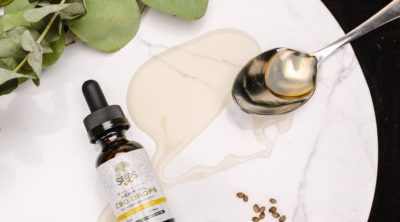
Nasal Irrigation, which is also known as Jala Neti, has originated from ancient Indian hygiene practices and has a lot to offer to the people affected by sinus and breathing problems. This article provides some information on the same.
Nasal irrigation is an ancient hygiene practice which is used on a regular basis in the Asia region. Yoga practice which has originated in India and was later introduced to the whole world, lays stress on practicing Jala Neti. Jala Neti is a Sanskrit word which literally means water cleansing of nasal cavity with the help of warm saline water. Today it is practiced in every part of the world and has become popular for its enormous benefits.
It is a combination of two basic therapies – the saline irrigation and nasal flush therapy. It addresses people having a history of chronic sinusitis which includes symptoms like headache, facial pain, cough, and a watery discharge (anterior rhinorrhea). It is also effective on nasal congestion. This practice is extensively used to prevent dryness, nosebleeds, cold, stuffiness, and other allergies related to the nasal passage.
Instruments Used
Since ancient ages, Hindu saints, the very first promoters and practitioners, have been using a specific-shaped small vessel called Neti Pot. Nothing has changed since. Even today this technique is principally carried out with the help of a Neti Pot. These pots are made up of ceramic clay, metal, plastic, or fiber. Nowadays, there are other alternatives available in the market. These alternative irrigators include hand squeezing nasal irrigation device, ear wash bulbs, power pump, and attachments for water picks. Moreover, ready-made isotonic solutions are also available.
Isotonic solution
The media required for the cleansing operation of the nasal passage is known as an isotonic solution. It can be prepared at home, or is available pre-mixed in the market. To make the required saline solution, take a cup of lukewarm water and mix half a teaspoon of non-iodized salt in it. While making the preparation, care should be taken regarding the temperature of the prepared solution as the mucous membrane inside the nasal cavity is very sensitive to the temperature, pH, and salinity. So, the required isotonic solution should match with the above mentioned properties of blood. Again, a small amount of baking soda may be added to lessen the burning sensation of mucosa.
Technique
It is quite a routine process which is carried out daily. People with nasal congestion or sinus problems can perform this process 4 to 5 times in a day. In fact, nasal irrigation is further classified into three gradual steps, although many people practice only the first step.
First stage: Each stage would require 250 ml solution for each nostril. A person has to stand over a sink, leaning and tilting his head to side and in forward direction with a degree of 45. One would have to place the spout in the upper nostril, so that isotonic solution will flow from upper nostril to lower nostril covering the nasal passage. While doing this, one would have to breathe via mouth. Repeat the same procedure for the other nostril. Due to some obstructions, if the water gets blocked, then repeat the process several times to get the nasal passage clear. The remaining solution in the nasal cavity should be blown off gently and it should be soaked with the help of a tissue.
Second Stage: Only after completion of the first stage successfully, a person can try for the second stage. It washes the deepest parts of nasal cavity to get clear the major obstructions. It involves lightly sniffing of water through each nostril. The personal guidance of an expert practitioner is a must, as this stage is comparatively difficult than the first one. This step gives much more desirable results in cases like chronic infections of sinus.
Third Stage: If both the stages have been completed successfully with ease, then one can turn to stage three as it involves taking the solution through the mouth and throwing it out through the nostrils.
Benefits
If performed regularly it has immense benefits to offer.
1. It improves the breathing process.
2. It reduces disorders related with nasal allergy.
3. It can fully eliminate watery nasal discharge.
4. Proponents of this therapy claim that it eliminates the risk of chronic sinus infections.
5. It can prevent common colds and sinus health gets improved generally.
6. It enhances Pranayama, the yogic breathing practice which itself has an array of benefits.
Besides this, it offers many additional advantages which are:
1. As it clears the nasal passage, a more relaxed and deeper breathing is possible.
2. A sense of odor and taste gets improved.
3. It also cleans the tear ducts which moisten the eyes regularly. So the vision gets clearer.
This is a great, easy, and inexpensive technique to follow. Hence, one can eradicate their breathing problems and lead a healthy life.
Disclaimer: This HolisticZine article is for informative purposes only, and should not be used as a replacement for expert medical advice.


